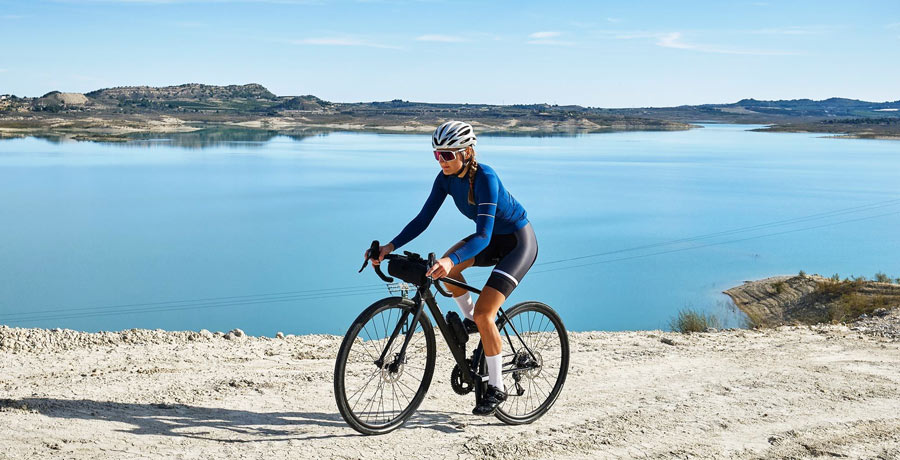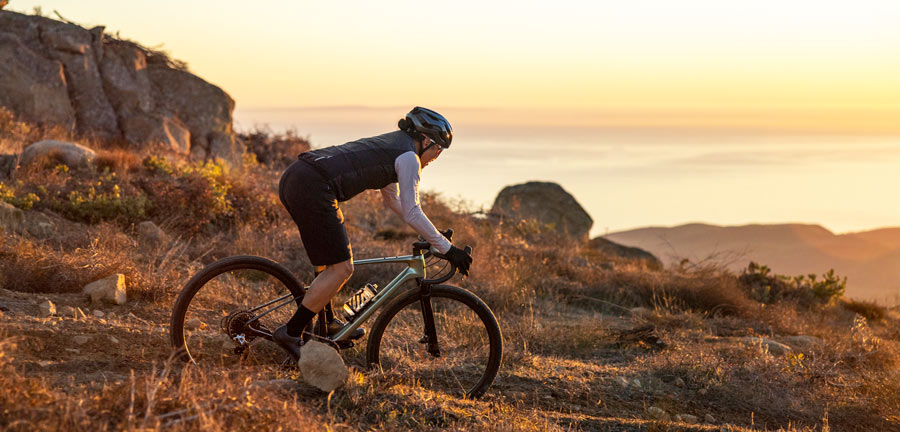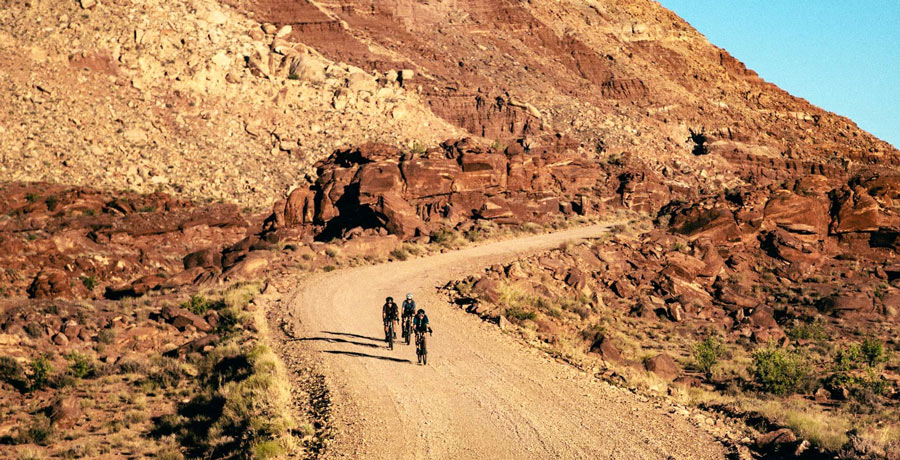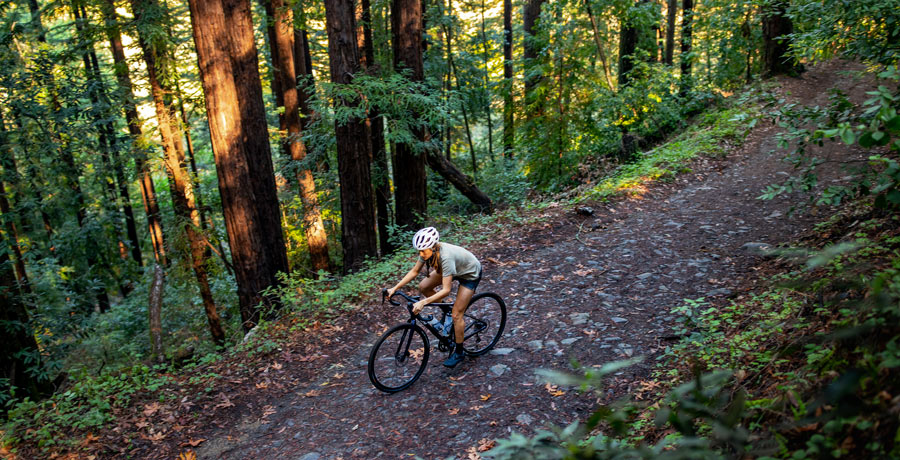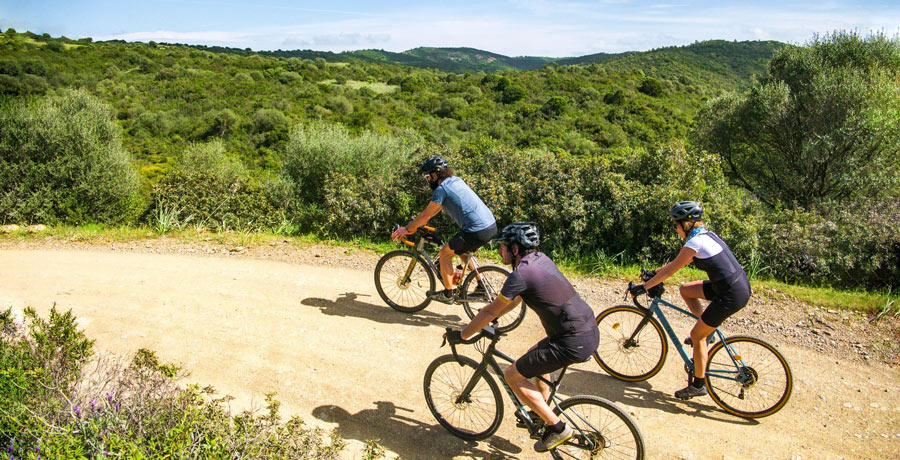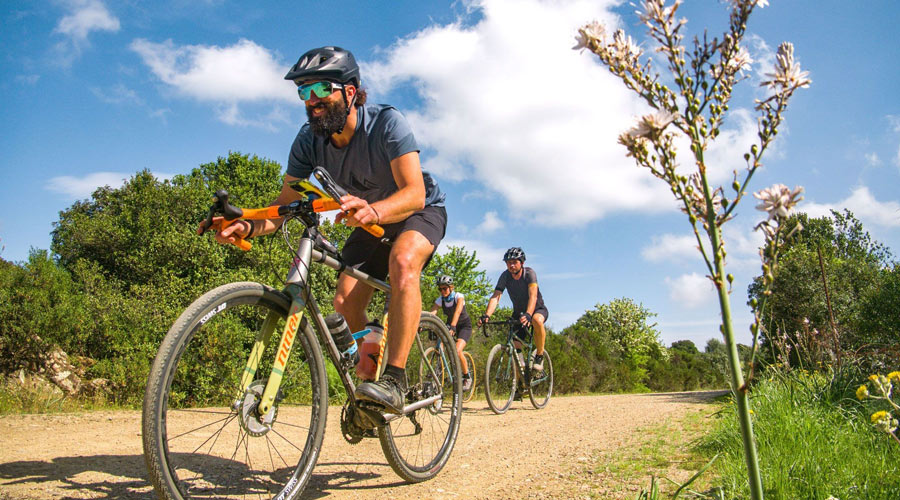
Do you need to do anything different when riding on a gravel trail to riding on a cycle path or a pothole-strewn country road? What adaptations could you consider making to your bike before heading out on a Skedaddle gravel bike holiday? We put all these questions and more to our gravelly-gurus and this is what they came back with…
Discover Our Full Range Of Gravel Riding Holidays Here!
Relax
“Relax. Don’t grip the bars so tightly. Relax your shoulders slightly. Drop your elbows. Look as far ahead as you can”. Somewhere back in the mists of time, these were the sage words of wisdom that I was given by my riding sensei. The advice was actually given to me when I was considering taking on the cobbled ‘bergs’ of Belgium’s Flanders region for the first time, rather than heading out on a typical gravel ride, but the advice works perfectly no matter what type of away-from-the-road surface you’re going to be heading out on. If you only take on board one word from that advice, then Relax would be it!
Make your body work for you
The biggest way to improve rider comfort on gravel rides is down to you, the rider. You sometimes see inexperienced riders gripping onto the handlebars for grim death, their knuckles white, their veins standing up and their eyeballs nearly popping out. If you ride like this, you’ll get rapidly fatigued and you risk coming off your bike the first time you hit an unexpected obstacle. Instead, try to relax your upper body, consciously make the effort to drop your shoulders and bend your legs/arms to allow them to work as natural suspension.
In-built suspension
Even how you position your hands on the bars will make a difference to your comfort. You will often see professional road riders riding cobbles with their hands in the centre of the bars, holding onto the tops. They will have dropped their elbows and will be using their bent arms to soak up the vibrations and this is a great body position to try and emulate when you’re riding on a gravel trail.
Keep your head up
As well as consciously trying to relax, remember to keep your head up and look where you want the bike the go. A typical head weighs around 5kgs and moving it around has a dramatic effect on your overall ‘fit’ on your bike. If you let your head drop, not only does this restrict your vision of what obstacles are ahead of you on the trail, but it also pushes your centre of gravity forwards and puts more weight on your hands and arms, which can lead to greater fatigue. The faster you are riding or the more technically demanding the trail is, the more you will benefit from lifting your head. Try and remember “head up, shoulders down, arms bent” and you’ll get the most comfort you can out of your body on a gravel riding holiday.
Use your brain
There’s a surprising amount of comfort to be extracted from your ride by using your mental powers more efficiently. The two biggest mental tasks you should try and achieve are to think smooth and to be confident. If this was an algebra lesson we would say that comfort = smoothness + confidence (body position+bike set-up). Something as simple as always scanning the track in front of you and making sure that you’re selecting the smoothest line makes a huge difference to how comfortable you’ll find the ride.
Where there is a choice of different lines it’s a bit like chess or snooker in that you’re always needing to think one step ahead – not only looking for the smoothest line immediately in front of you but also what’s next and next and next. You might need to repeatedly switch from one line to another in order to find the smoothest route.
Being confident is our final top tip for increasing comfort on your next gravel riding holiday. Confidence comes from a mix of riding experience, having a good posture on the bike and trusting in your bike set-up. Thinking confident will often help you relax, which in turn means you’re likely to think more clearly and so make better line choices, which results in a more comfortable ride.
Setting up your gravel bike
How you set up your gravel bike will have a dramatic effect on the terrain you can tackle and how smooth your ride will potentially be. The first thing to think about is tyre choice. This is definitely a case of bigger is better. The greater the volume of air you have inside your tyre, the bigger the cushion you have against punctures and the softer the “ride feel” will potentially be. There’s plenty of good information here about the benefits of running tubeless tyres and the balance of tyre width, tyre pressure and drag, but essentially wider tyres, run at lower pressures will help you find the “goldilocks” setting.
Consider a rim liner
What if your gravel bike only has clearance for smaller-volume tyres? Then a rim liner could be just what you’re after. The liner, which is typically constructed from a dense foam, sits between the tyre and the rim and in the event of a heavy impact, something like hitting a hidden rock or large root, they cushion the blow and help prevent the tyre from being damaged.
The rim liner kit will add around 70-100g of extra weight, which is minimal for the extra security they offer. You still run your normal tubeless sealant (ammonia-free types are best to avoid affecting the material of the liner), but you can get away with a smaller volume, as the tyre liner is doing part of the heavy lifting now of preventing punctures. With liners fitted, you will be able to use lower pressures which offers a dramatic improvement in grip and comfort. Try somewhere around 35psi/2.4bar as a starting point and slowly decrease it. Everyone’s ideal pressure will differ and it will depend on your personal riding style, the type of trails you ride and your body shape. On my gravel bike with 40mm tyres (and tyre liners) fitted I generally run 1.9 bar/27psi.
Once you have your tyres sorted, what else can you do to improve comfort? The next thing to think about is contact points, particularly your hands. Thicker bar tape is a brilliant place to start – it’s relatively cheap and will make a surprising difference. You can add gel pads under your tape or even double-wrap it, which is what pro-road riders have historically done in races like the Paris-Roubaix. Next up the price ladder is a suspension stem. Not a cheap option and the extra movement is initially a little strange to get used to, but a suspension stem does an amazing job of taking the sting out of your ride. Finally, you come to handlebars – a set of carbon bars are not a cheap fix, but will be the icing on the cake in terms of front-end comfort.
By thinking about the way that you ride and making a few minor tweaks to your gravel bike setup, we think you’ll be able to get the most out of your Skedaddle Gravel Riding Holiday. Have fun!
Do you have any questions? Check out our Gravel Riding FAQs here!

